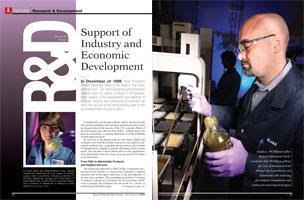
In December of 1899, then President William McKinley noted in his State of the
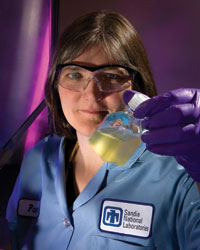 Looking back over the past century, history has proven that innovations resulting in new products and processes have been an integral factor in the success of the
Looking back over the past century, history has proven that innovations resulting in new products and processes have been an integral factor in the success of the
As we look at the present and into the future, R&D will continue to provide the critical solutions to our needs for advanced medical care, expanded energy sources, new modes of transportation, enhanced defense and many other societal needs. The outcome of these efforts will not only expand business opportunities but also create economic growth for many local economies.
From R&D to Marketable Products and Related Services
The traditional approach to R&D is the evolutionary progression from primary (or theoretical) research to applied research, and in the right conditions, to the development of an innovative product. This serendipitous method of creating a solution looking for a problem can be somewhat inefficient in product development but can result in a variety of technological breakthroughs.
In contrast, the emerging market-back or translational R&D approach starts with a specific need and seeks out the R&D efforts and specific technologies required to produce a solution. What is emerging is a strategy that structures each R&D step around a specific objective in order to achieve an ultimate product application. In the areas of medical devices and renewable energy systems, key objectives are driven by the need for smaller/larger scale, increased output and other performance requirements that leverage breakthroughs in material science and electronics along with other advanced sciences.
R&D Collaboration
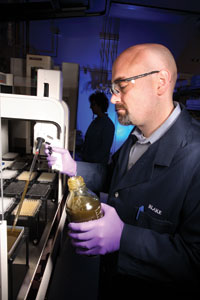 Due to the complexity and cost of product development, major technological breakthroughs and their applications are frequently the outcome of joint R&D efforts between universities, government labs and private sector companies that may be funded by federal grants and private investors. Activities often cross country boarders for certain technologies and product applications. They may also partner with companies from other industries that face similar technical challenges. The global and multi-organization collaborative approach brings speed and support but it also brings new challenges of protecting intellectual property and having a differentiable market offering. To this end, there are circumstances where individual companies may fully fund a university or contract lab in order to control intellectual property.
Due to the complexity and cost of product development, major technological breakthroughs and their applications are frequently the outcome of joint R&D efforts between universities, government labs and private sector companies that may be funded by federal grants and private investors. Activities often cross country boarders for certain technologies and product applications. They may also partner with companies from other industries that face similar technical challenges. The global and multi-organization collaborative approach brings speed and support but it also brings new challenges of protecting intellectual property and having a differentiable market offering. To this end, there are circumstances where individual companies may fully fund a university or contract lab in order to control intellectual property.The development of renewable energy technology is a good example of joint R&D activities. The federal government operates the National Renewable Energy Laboratory in Golden,
College and university-based research centers are also being established throughout the country to further develop energy conservation techniques and renewable energy technologies.
In the wind technology segment, the major players within the North American market have established their R&D operations in strategic locations in 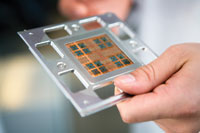 order to tap into
order to tap into
In demonstrating collaboration with a similar industry, Vestas has recently announced an agreement with The Boeing Company to study areas related to material science, aerodynamics and advanced production methods. Siemens Energy is another major player in wind energy with R&D operations for wind turbines in
Within the solar segment, there are multiple product and application areas that include photovoltaics, solar thermal, concentrating solar power and others. Some of the major producers of solar-related equipment include Solar World, AG with headquarters in Bonn, Germany, R&D in Munich, Germany, and its U.S. headquarters in Portland, Oregon; First Solar with headquarters in Phoenix, Arizona and R&D in Perrysburg, Ohio; Evergreen Solar in Marlborough, Massachusetts; Hemlock Semiconductor in Hemlock, Michigan; United Solar Ovonic in Rochester Hills, Michigan; and Schott Solar with headquarters in Mainz, Germany and R&D in Mainz as well as in Duryea, Pennsylvania.
Medical devices represent an extremely diverse array of products with both diagnostic and therapeutic applications. They range from tongue depressors and elastic bandages to sophisticated instruments and surgical needles to drug delivery systems, heart valves and pacemakers. The development and use of medical devices is closely controlled by the U.S. Food and Drug Administration (FDA) to assure efficacy in their application.  The FDA has a very broad but concise definition of a medical device with primary differentiators being that the product does not rely on chemical or biological actions which are covered by other offices of the FDA under drugs and biologics.
The FDA has a very broad but concise definition of a medical device with primary differentiators being that the product does not rely on chemical or biological actions which are covered by other offices of the FDA under drugs and biologics.
The National Institute of Health issues substantial grants to both universities and the private sector to study and develop solutions for different medical issues including breakthroughs in medical devices. Major producers or investors will also contract with private specialty R&D labs to develop specific types of products. Other companies have a strategy of acquiring emerging companies with products that demonstrate a significant market potential.
Medical device R&D activity takes place in a number of U.S. locations including Greater Boston, New York City, Pittsburgh, Chicago, Milwaukee, Minneapolis, Denver, Salt Lake City, Seattle, San Jose, Los Angeles and San Diego. These are locations that have major research universities, substantial hospital systems and an expanding medical-related products industry that includes medical devices and biotech products.
Manufacturing Process R&D
A major contributor to the success and competitiveness of a product is its manufacturing process. Management tools such as Lean Manufacturing or Six Sigma help to identify areas for improvement that are addressed administratively as well as through the application of technology. Companies make substantial investments in process improvement to achieve high product quality and operational productivity with the support of universities and consultants. For example, Georgia Tech operates the Enterprise Innovation Institute that has programs to support businesses throughout the state to enhance manufacturing productivity and take advantage of the university’s research activities. The institute has representatives located throughout the state that build relationships with local companies and identify specific needs. They also operate a Venture Lab that focuses on facilitating the commercialization of technology generated through Georgia Tech’s R&D activities.
Product Life Cycle
Technology-based products are by nature in a constant state of flux. Both product design and production are constantly being refined to sustain a competitive advantage based on product features and performance as well as operational productivity. The needs and circumstances of a company and its products change as it evolves through the life cycle. In Phase I, the primary needs are financial resources to sustain the start-up and product rollout as well as the R&D support for refining the product.
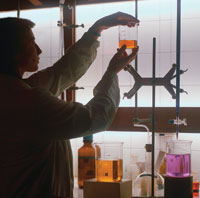 As the demand for the product expands into Phase II, the needs shift to expanded production capacity and access to new markets. There will be on-going support from R&D with an additional requirement to continually refine the production process to achieve both quality and productivity objectives. If the product is successful there will most likely be competitors cropping up around the globe and larger companies considering an acquisition to expand their market offerings. In addition, smaller companies may merge to leverage technologies or rapidly achieve a critical mass in production and market access.
As the demand for the product expands into Phase II, the needs shift to expanded production capacity and access to new markets. There will be on-going support from R&D with an additional requirement to continually refine the production process to achieve both quality and productivity objectives. If the product is successful there will most likely be competitors cropping up around the globe and larger companies considering an acquisition to expand their market offerings. In addition, smaller companies may merge to leverage technologies or rapidly achieve a critical mass in production and market access.
In Phase III, the market growth potential flattens out as other technologies and products chip away at market share. At this point, companies begin to consolidate, price becomes critical and operations seek out lower operating cost locations. The life cycle curve is a reminder that every product has a finite period of success and unless companies engage in constant change – both in product development and process improvement – they will eventually experience a cycling out of the market.
Seeking an Optimum Location Strategy
For rapidly-evolving, technology-based companies there are very distinct life cycle stages that require different location strategies. At the inception of the company, it is typically located near its source of R&D. This may be a major city or a more remote university town. As the company seeks angel and venture capital through equity partners, the decision for location may shift to the financial sponsors. In addition, as the company develops and expands production, there will be a need to seek out locations that have reasonable access to markets as well as provide the resources (labor, facilities, training and low cost utilities) to support production.
Over time, as the company expands, it evolves from a small business team to a functional company, with each function having its own unique location requirements. For example, the headquarters operation needs a certain level of air access to key markets, proximity to business services, quality of life that supports the attraction and retention of top talent, and overall favorable business environment, and has an appropriate image for the company. In contrast, the R&D operation needs to be near its R&D partners that support new product development, have a quality of life that attracts and retains technical talent, and has the appropriate facilities and cost structure.
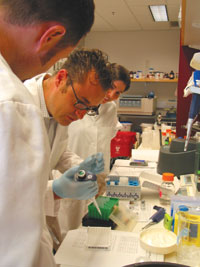 As production expands, there is a need to develop a global strategy that serves the local market while maintaining competitive operating costs. Some companies grow organically while others opt for a merger or acquisition to enhance their capability and speed to market. The unique location characteristics of manufacturing operations include gaining access to the right labor skills with a moderate level of labor competition, meeting the logistical needs of the supply chain, having access to sites or buildings that minimize start-up time, as well as utilities that provide the capacity and reliability at competitive rates. Manufacturers also need access to the resources that identify and implement continuous productivity gains within production and its support operations.
As production expands, there is a need to develop a global strategy that serves the local market while maintaining competitive operating costs. Some companies grow organically while others opt for a merger or acquisition to enhance their capability and speed to market. The unique location characteristics of manufacturing operations include gaining access to the right labor skills with a moderate level of labor competition, meeting the logistical needs of the supply chain, having access to sites or buildings that minimize start-up time, as well as utilities that provide the capacity and reliability at competitive rates. Manufacturers also need access to the resources that identify and implement continuous productivity gains within production and its support operations.
Emerging and expanding companies frequently consider a global deployment strategy that links R&D to multiple centers of excellence in North America, Europe and
The Challenge
Developing and producing innovative products is the core of any growth-oriented economy. The success of individual companies is having access to the locations with the right resources and business environment to sustain competitiveness throughout the product life cycle. The challenge for both companies and their host communities is in acknowledging and adapting to the constantly evolving resource needs over the life of a company and its products.

